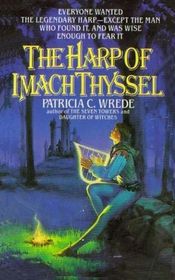Reviewer: Emera
Date read: Oct. 18, 2014
Book from: Personal collection
I went on a bit of an M. R. James rampage last winter (the most fearsome sort of rampage, clearly), but in February stopped about halfway into this, the second Penguin volume of his complete, classic ghost stories. The Haunted Dolls’ House (2006, annotated by S. T. Joshi) collects the contents of A Thin Ghost (1919) and A Warning to the Curious (1925), as well as several introductions by James to other collections of ghost stories, and “Stories I Have Tried to Write,” an amusingly brisk rundown of ghost stories that he conceived but failed to complete. (For reference, the first annotated Penguin volume is entitled Count Magnus & Other Stories. All of James’ stories are available free online as well.)
James’ later ghost stories are generally considered to be weaker than his earlier work; both this and the simple fact of having saturated on the Jamesian formula were what led me to hit the pause button on The Haunted Dolls’ House. But with the return of colder weather, I put it back into rotation as bedtime reading.
At this point I can hardly remember specifics of most of the stories that I read at the beginning of the year (and choose not to skim them now in case they can pleasantly surprise me during a dedicated future reread). But I do remember struggling to get through “The Residence at Whitminster” and “Two Doctors” – that there was a depressing lack of paragraph breaks to get one through the period chatter and hand-wringing, and that there was a general feeling of windiness and of much of the action being beside the point. “Two Doctors” is a great title, though, as are “The Uncommon Prayer-book” (only James!) and “There Was a Man Dwelt by a Churchyard” (thanks for the latter must go to Shakespeare’s A Winter’s Tale).
“An Episode of Cathedral History” is a classic, plain and simple. This is one of the James stories that I read anthologized many years ago, before I really knew who M. R. James was. Something emerging from cathedral depths – its long entombment disrupted – to terrorize a humble town…
I very much liked the eeriness and outdoor setting of “A View from a Hill” – even those of James’ stories that don’t deal with haunted rooms or houses have a feeling of enclosure about them thanks to their tightness of construction, so it was a refreshing and unsettling change of pace to locate the uncanny as an emergence from a broader, rural setting. And the descriptive passages of the English countryside were quite lovely, and again, unusually outdoorsy for James, who normally satisfies himself with a two-paragraph rundown of the architectural features of whatever Georgian manse or Gothic cathedral is under consideration.
“Rats” is just thoroughly great in my book, from the opening supposition, to the counterpoint of the hot afternoon sunlight and the thing in the bedroom. It gives me the same uncomfortable, fevery feeling as some of my favorite Lovecraft stories, and gibbets are always a winning point for me so far as sinister imagery is concerned.
“An Evening’s Entertainment” was unexpectedly, specifically gory for James, but the framing device of yesteryear’s granny telling a bedtime story was a charming application of James’ knack for voices, and I loved how the haunted site became the matrix for several generations of familial terror. I am also partial to any imagery involving Beelzebub (chalk it up to reading Lord of the Flies at an impressionable age), and the combination of the vicious, lingering flies with the temptation of dark, glistening blackberries was such a strikingly uncomfortable material juxtaposition. Black flies, blackberries…
The twelve bonus medieval (15th-century) ghost stories, transcribed by James and here translated by Leslie Boba Joshi, are thoroughly weird and wonderful, full of guilt and sorcery and marshes and midnight processions of ghosts riding livestock. I wish Mike Mignola would take some of them on; they’d be perfect for the folklore-centric volumes of Hellboy. I had a long conversation with friend E., who is currently attending divinity school, about their mixture of bizarre and terrifying folky spooks (“And you will see him in the shape of a bullock without mouth, eyes, or ears” – or, “Upon hearing this, the apparition faded into a shape something like a wine-vat, whirling at four angles, and started rolling away” !), with a sort of legalistic, liturgical fixation on absolution via confession – a clear warning and prescription to would-be secret sinners. Practically everybody in these stories is guilty of something, and just waiting to be found out (and then, ideally, absolved). The wronged master of the house takes recourse to consulting a sorcerer and a demon boy (whose supernatural abilities are accessed by anointing his fingernail???) in order to find the thief who ate his meats; an apparently innocuous traveler is confronted by the ghost of his aborted child. All of this conjures up images of a teeming supernatural world growing up out of a fertile substratum of moral murk. The misdeeds of the past furnish us with the great ghost stories of the present – a formula that James made the best of.
Go to:
M. R. James: bio and works reviewed
“M. R. James and the Quantum Vampire”
